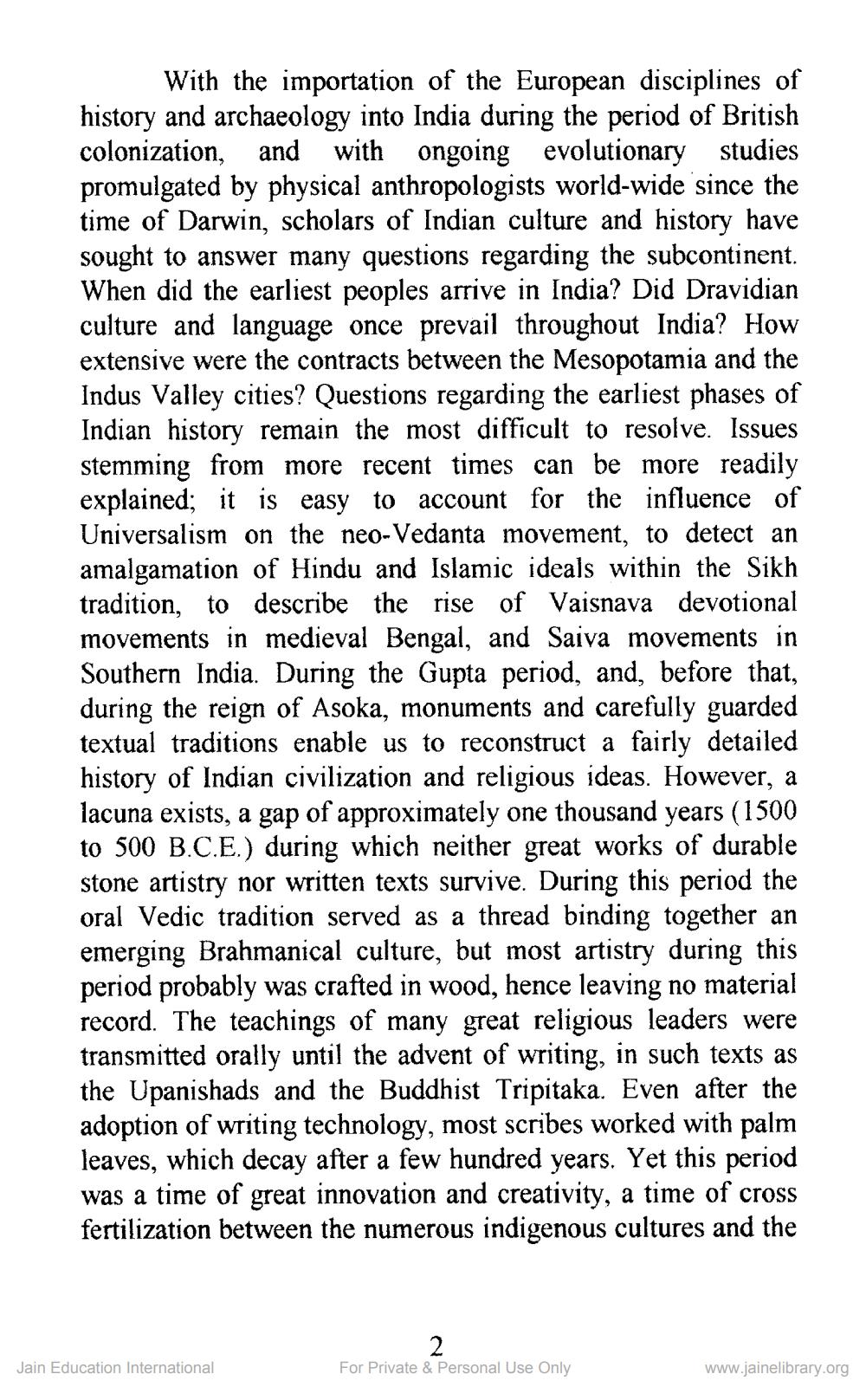________________
With the importation of the European disciplines of history and archaeology into India during the period of British colonization, and with ongoing evolutionary studies promulgated by physical anthropologists world-wide since the time of Darwin, scholars of Indian culture and history have sought to answer many questions regarding the subcontinent. When did the earliest peoples arrive in India? Did Dravidian culture and language once prevail throughout India? How extensive were the contracts between the Mesopotamia and the Indus Valley cities? Questions regarding the earliest phases of Indian history remain the most difficult to resolve. Issues stemming from more recent times can be more readily explained; it is easy to account for the influence of Universalism on the neo-Vedanta movement, to detect an amalgamation of Hindu and Islamic ideals within the Sikh tradition, to describe the rise of Vaisnava devotional movements in medieval Bengal, and Saiva movements in Southern India. During the Gupta period, and, before that, during the reign of Asoka, monuments and carefully guarded textual traditions enable us to reconstruct a fairly detailed history of Indian civilization and religious ideas. However, a lacuna exists, a gap of approximately one thousand years (1500 to 500 B.C.E.) during which neither great works of durable stone artistry nor written texts survive. During this period the oral Vedic tradition served as a thread binding together an emerging Brahmanical culture, but most artistry during this period probably was crafted in wood, hence leaving no material record. The teachings of many great religious leaders were transmitted orally until the advent of writing, in such texts as the Upanishads and the Buddhist Tripitaka. Even after the adoption of writing technology, most scribes worked with palm leaves, which decay after a few hundred years. Yet this period was a time of great innovation and creativity, a time of cross fertilization between the numerous indigenous cultures and the
Jain Education International
For Private & Personal Use Only
www.jainelibrary.org




